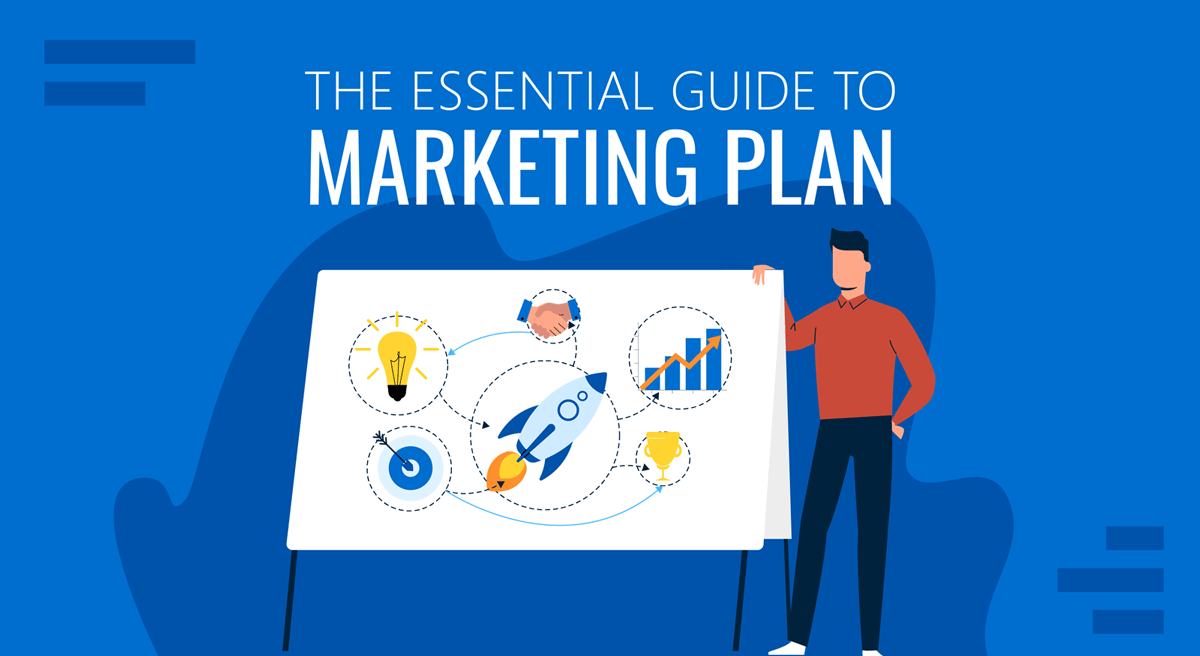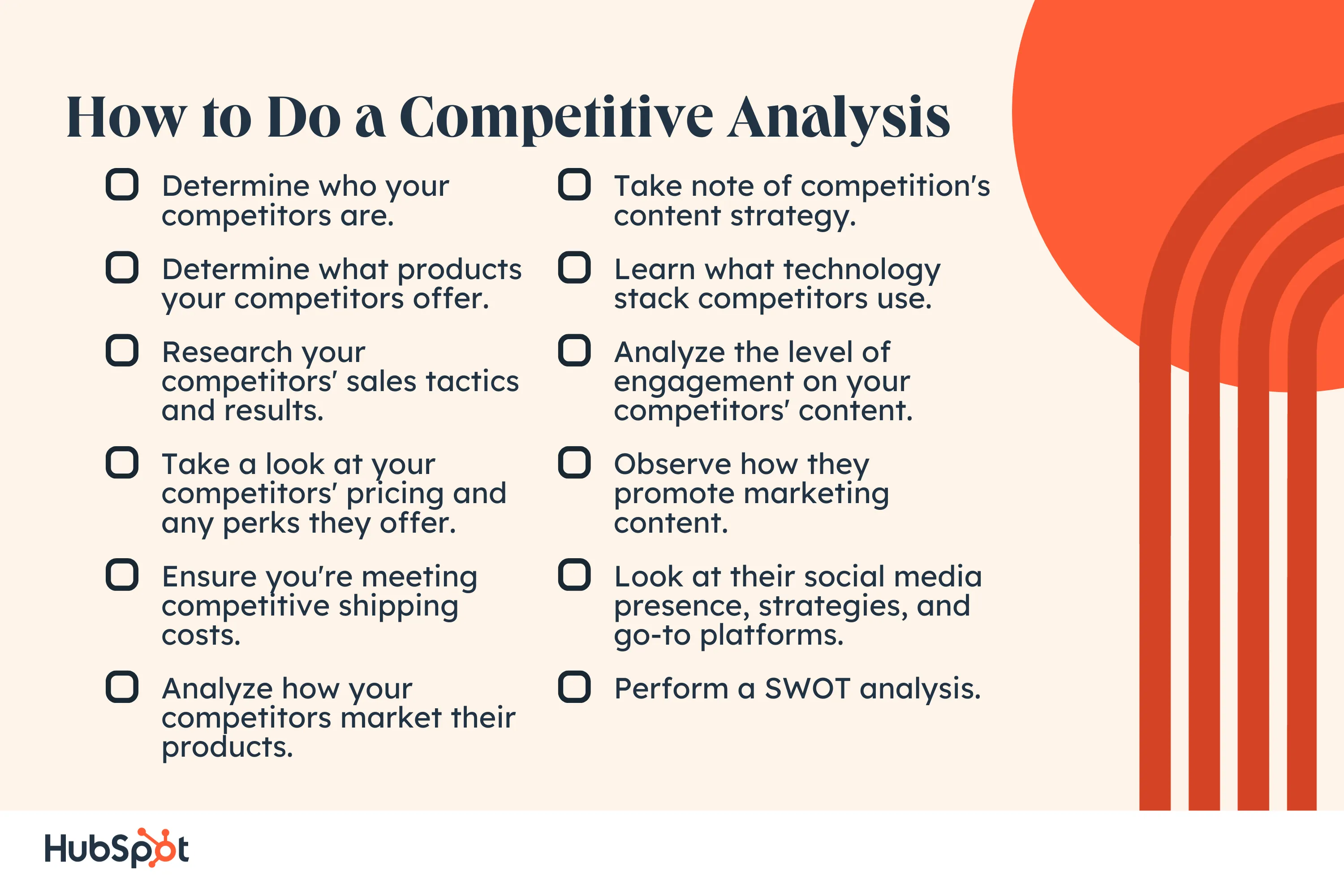Step 2 of a Marketing Plan involves conducting market research, identifying target audiences, and analyzing competitors. This step is crucial as it sets the foundation for the entire marketing strategy.
By understanding the market landscape, customer needs, and competition, businesses can create targeted plans that effectively reach their desired audience and differentiate themselves from competitors. Market research helps in gathering key data and insights that aid in decision-making, allowing companies to tailor their products or services to meet customer demands.
Through competitor analysis, businesses identify their strengths and weaknesses, providing opportunities to position themselves strategically in the market. Overall, Step 2 of a Marketing Plan lays the groundwork for successful marketing campaigns by ensuring that the right message reaches the right people at the right time.
Importance Of Strategic Planning
Strategic planning is a crucial step in a marketing plan as it sets the foundation for a company’s success. It involves the process of defining the business’s direction, identifying its objectives, and creating strategies to achieve those objectives effectively. This step is vital for businesses of all sizes as it helps them to align their resources, be proactive in their approach, and adapt to changes in their industry.
Benefits Of Clear Strategies
Implementing clear strategies in a marketing plan offers a multitude of benefits for businesses. It provides a clear roadmap for the company, ensuring that all efforts are directed towards a common goal. Clear strategies also enhance decision-making processes and help in allocating resources effectively. They also enable businesses to stay focused and make informed choices in the ever-evolving marketplace.
Impact On Marketing Success
Strategic planning plays a pivotal role in determining the success of a company’s marketing efforts. It enables businesses to anticipate and respond to market trends, gain a competitive edge, and capitalize on opportunities. By having a well-defined strategy in place, companies can enhance brand visibility, engage with their target audience effectively, and ultimately drive business growth and profitability.

Credit: www.questionpro.com
Components Of Marketing Strategy
A marketing strategy is a crucial element of any successful business plan. It serves as a roadmap to achieve the company’s marketing goals and objectives. Step 2 of a marketing plan involves the formulation of this marketing strategy. Understanding the components of a marketing strategy helps businesses tailor their marketing efforts to reach their target audience effectively.
Market Segmentation
Market segmentation is the process of dividing a broad target market into smaller, more specific segments based on common characteristics, needs, or preferences. By identifying distinct customer groups within the market, businesses can create tailored marketing messages and strategies that resonate with each segment.
Why is market segmentation important?
- Allows businesses to understand their customers better and tailor their offerings accordingly
- Enables businesses to focus their marketing efforts on the most profitable segments
- Increases the effectiveness of marketing campaigns by delivering targeted messages
- Helps businesses identify untapped market opportunities
Examples of market segmentation criteria:
| Demographic | Geographic | Psychographic | Behavioral |
|---|---|---|---|
| Age | Location | Values | Purchase history |
| Gender | Climate | Lifestyle | Product usage |
| Income | Urban/Rural | Personality traits | Brand loyalty |
Target Audience Identification
Identifying the target audience is a crucial step in developing an effective marketing strategy. The target audience refers to the specific group of individuals or businesses that the marketing efforts will be focused on. By understanding the characteristics, needs, and preferences of the target audience, businesses can create highly targeted campaigns that are more likely to resonate and convert.
How to identify the target audience:
- Conduct market research to gather data on potential customers
- Analyze the demographics, psychographics, and behaviors of your existing customer base
- Identify common characteristics and preferences within your target market
- Create customer personas or profiles that represent your ideal customers
- Refine and update your target audience based on ongoing market research and feedback
Benefits of identifying the target audience:
- Allows businesses to customize their marketing messages to resonate with the target audience
- Increases the chances of converting leads into customers
- Improves the return on investment (ROI) of marketing campaigns
- Helps businesses allocate marketing resources more efficiently
Developing Clear Marketing Objectives
Developing clear marketing objectives is crucial in ensuring the success of a marketing plan.
It involves setting specific goals that align with the business objectives.
Setting Specific Goals
Setting specific goals is the foundation of a successful marketing plan.
It defines what you aim to achieve within a specific timeframe.
Aligning With Business Goals
Aligning with business goals ensures that your marketing efforts
contribute directly to the overall success of the business.
Crafting Effective Positioning
Crafting effective positioning is a crucial step in the marketing plan as it helps businesses differentiate themselves in the market and communicate their unique value to potential customers. This step involves creating a strong positioning strategy that sets a brand apart from its competitors and resonates with the target audience. In this section, we will explore differentiating strategies and the process of creating a unique value proposition to achieve effective positioning.
Differentiation Strategies
Differentiation is the key to standing out in a crowded market. Businesses can use various strategies to differentiate their products or services from competitors. Some common differentiation strategies include:
- Product features and performance
- Price and value
- Brand image and reputation
- Customer service and support
- Technological innovation
Creating A Unique Value Proposition
A unique value proposition (UVP) is a clear statement that communicates the unique benefits a product or service offers to customers and how it is different from the competition. Crafting an effective UVP involves identifying the target audience’s needs and desires and articulating how the brand’s offering fulfills those needs in a distinct way. A compelling UVP should be:
- Clear and concise
- Relevant to the target market
- Emphasize the benefits and outcomes
- Unique and memorable
Implementing Actionable Tactics
Once you have developed a solid marketing strategy and set clear goals, the next step is to implement actionable tactics. This crucial phase involves selecting the most effective marketing channels and allocating resources appropriately.
Selecting Marketing Channels
In order to reach your target audience effectively, it is important to carefully select the marketing channels that align with your goals and the preferences of your target market. Here are a few key considerations to keep in mind:
- Identify your target audience: Understand who your ideal customers are and where they spend their time online. This will help you determine the most suitable channels to reach them.
- Research popular channels: Consider the various marketing channels available, such as search engine optimization (SEO), social media platforms, email marketing, content marketing, and paid advertising. Evaluate the pros and cons of each channel in relation to your goals.
- Focus on relevance and engagement: Choose channels that allow you to deliver your message in a relevant and engaging way. For example, if your target audience is active on Instagram, prioritize visual content and influencer marketing on this platform.
- Consider your budget: Take into account the budget you have allocated for marketing activities. Some channels may require more financial investment than others. Prioritize channels that offer a good return on investment.
Allocating Resources
Once you have selected the marketing channels, it is essential to allocate your resources wisely to maximize the impact of your tactics. Here are some factors to consider:
- Define your budget: Determine how much you are willing to invest in each marketing channel. This will allow you to allocate your resources effectively and prevent overspending.
- Assign personnel: Decide who will be responsible for implementing and managing each tactic. Ensure that your team members have the necessary skills and expertise to execute the tasks effectively.
- Monitor and adjust: Regularly monitor the performance of your tactics and be ready to make adjustments if necessary. Analyze key metrics, such as conversion rates and engagement levels, to identify areas that need improvement.
- Optimize for efficiency: Look for ways to streamline your processes and make the most out of your resources. This may involve automating certain tasks, outsourcing non-core activities, or leveraging technology to increase efficiency.
By carefully selecting the right marketing channels and allocating resources effectively, you can implement actionable tactics to drive your marketing plan towards success. Remember to regularly evaluate and refine your approach to stay ahead in a constantly evolving digital landscape.

Credit: slidemodel.com
Measuring And Iterating
Once a marketing strategy has been implemented, it’s crucial to continuously measure its effectiveness and make necessary adjustments. This involves evaluating strategy performance and adjusting strategies as needed.
Evaluating Strategy Performance
Measuring the performance of your marketing strategies helps you assess whether they are achieving the desired goals and outcomes. This involves analyzing key performance indicators (KPIs) such as conversion rates, website traffic, and engagement metrics to gain valuable insights into the effectiveness of your strategies. By evaluating performance regularly, you can identify areas of improvement and make informed decisions for optimizing your marketing efforts.
Adjusting Strategies As Needed
Based on the evaluation of strategy performance, it’s essential to be prepared to make adjustments to your marketing strategies. This may involve reallocating resources, refining messaging, or exploring new tactics to better align with your objectives. It’s important to be agile and responsive in adapting your strategies to ensure they remain effective in a dynamic market environment.

Credit: blog.hubspot.com
Frequently Asked Questions
What Is The Step 2 Of The Marketing Plan?
Step 2 of the marketing plan involves conducting market research to understand the target audience.
What Are The 2 Steps In A Marketing Strategy?
Identifying target audience and creating a unique value proposition are the two key steps in a marketing strategy.
What Is The Second Phase Of Marketing?
The second phase of marketing is the implementation of strategies and tactics to promote products or services. This involves creating advertising campaigns, establishing a strong online presence, and targeting the intended audience effectively. It is crucial for driving sales and increasing brand awareness.
What Are The 2 Major Components Of A Marketing Strategy?
The two major components of a marketing strategy are targeting the right audience and crafting compelling messaging. This helps businesses reach potential customers and effectively communicate their value proposition.
What Are The Key Elements Of Step 2 In A Marketing Plan?
Step 2 of a Marketing Plan involves market research, target audience analysis, and setting clear objectives.
Conclusion
To successfully execute your marketing plan, it is crucial to understand the key elements of each step. In Step 2, you need to identify which strategies or tactics will be employed to reach your target audience and achieve your marketing objectives.
This may include market research, segmentation, positioning, branding, and promotional activities. By carefully selecting the right approaches, you can maximize your marketing efforts and drive successful outcomes for your business. Remember to continuously evaluate and adjust your strategies to stay competitive in today’s dynamic marketplace.











